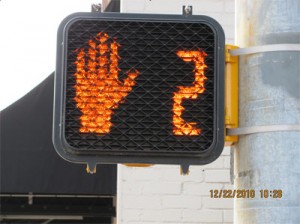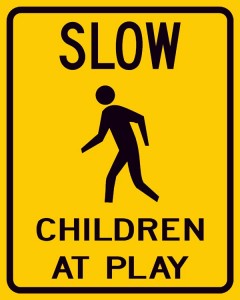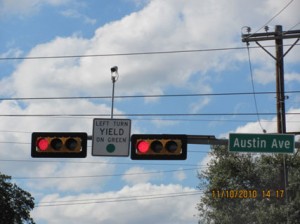Traffic and Signals FAQ
Information below addresses frequently asked questions about traffic signals, pedestrian safety, traffic cameras, and pedestrian safety near schools.
Public Works Signal Operations maintains 56 traffic signals and 16 school zone flashers within the city limits. These signals are monitored 24 hours a day. To report a signal problem, please contact Customer Care dispatch at 512-930-3640, or for non-emergencies, you can email transporation@georgetown.org. The City is continuously monitoring traffic conditions on City streets to evaluate where new traffic signals may be needed. An intersection is evaluated on nine different factors to determine if a signal is warranted. Those include: 1 – Eight-hour vehicular traffic counts An engineering and traffic study is conducted at an intersection and scored on these nine factors, which are based on guidelines set by the Federal Highway Administration and Texas Department of Transportation. Funding for intersection improvements, including new traffic signals, was included in the 2015 and the 2021 City transportation bonds. If a new traffic signal is requested, the City may initiate a traffic and engineering study to determine viability of a traffic signal. To request a new traffic signal, email transporation@georgetown.org. For safe walking, use sidewalks. When there is no sidewalk and it is necessary to walk in the street, walk on the *left side*, facing traffic. This is contrary to what many people may have been told growing up. Walking on the left side, facing traffic, enables you to judge when a car may not see you and is coming too close, allowing you time to get out of the roadway. Fortunately, these types of accidents are rare. There is little a pedestrian can do to improve a driver’s habits, or that drivers can do about the behavior of pedestrians. But there are steps each can take to be more careful. Pedestrians can stop faster and maneuver easier than vehicles can, so pedestrians can do much to increase their own safety. Although some other states have posted these signs widely in residential areas, no factual evidence has been presented to document their success in reducing pedestrian accidents, operating speeds, or legal liability. Studies have shown that many types of signs attempting to warn of normal conditions in residential areas have failed to achieve the desired safety benefits. There is a concern that the signs encourage parents and children to believe that they have an added degree of protection, which in fact is not the case. Because of these serious considerations, Federal Standards do not recognize and actually discourage the use of “Children at Play” signs. Specific warnings for schools, playgrounds, parks and other recreational facilities are available for use where justified. Children should NOT be encouraged to play within street travelways. The sign has long been rejected since it is a suggestion that this behavior is acceptable. The City of Georgetown will be taking down these signs as they become worn or damaged. The cameras that are currently in use are for traffic and for vehicle detection. None of the cameras are used for red light or speed enforcement. They are used solely for the efficient movement of traffic. Safe Walking Tips Safe Bicycling Tips Safe Driving Tips
2 – Four-hour vehicular traffic counts
3 – Peak hour traffic count
4 – Pedestrian traffic count
5 – School crossing at intersection
6 – Coordination with other signals in the vicinity
7 – Crashes at the intersection
8 – Roadway network in the vicinity
9 – Intersection near an at-grade rail crossing Awareness, by both drivers and pedestrians, is the way to stop tragic pedestrian accidents. These accidents can happen when either the pedestrian or the driver are inattentive or careless. When it comes to pedestrian versus vehicle, the pedestrian always loses because of the size and weight of the vehicle.
Awareness, by both drivers and pedestrians, is the way to stop tragic pedestrian accidents. These accidents can happen when either the pedestrian or the driver are inattentive or careless. When it comes to pedestrian versus vehicle, the pedestrian always loses because of the size and weight of the vehicle.
 An often-heard request involves the posting of generalized warning signs with “SLOW – Children at Play” or other similar messages. Parental concern for the safety of children in the street near home, and a misplaced, but widespread, public faith in traffic signs to provide protection often prompt these requests.
An often-heard request involves the posting of generalized warning signs with “SLOW – Children at Play” or other similar messages. Parental concern for the safety of children in the street near home, and a misplaced, but widespread, public faith in traffic signs to provide protection often prompt these requests.

To report a signal light out or a signal light out please call 512-930-3555.









